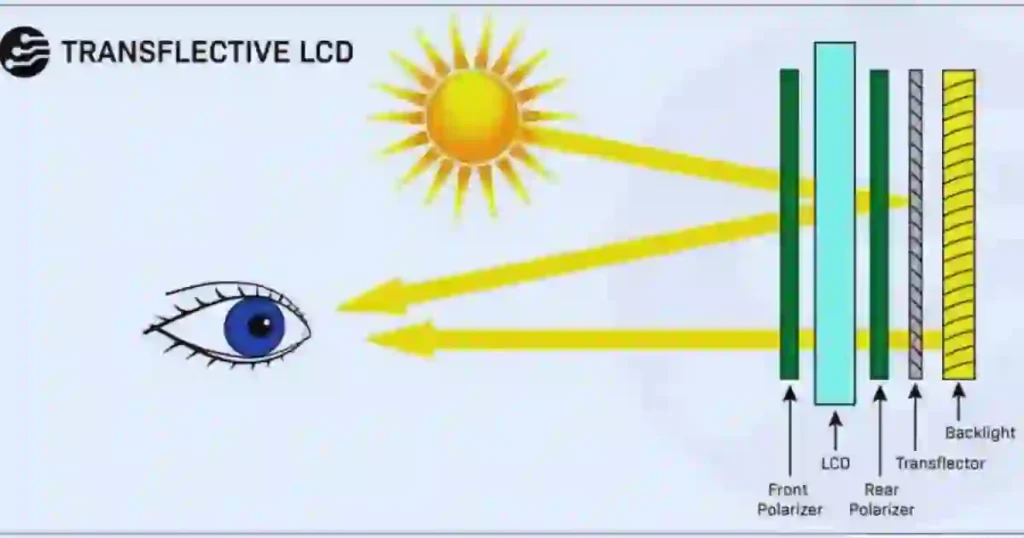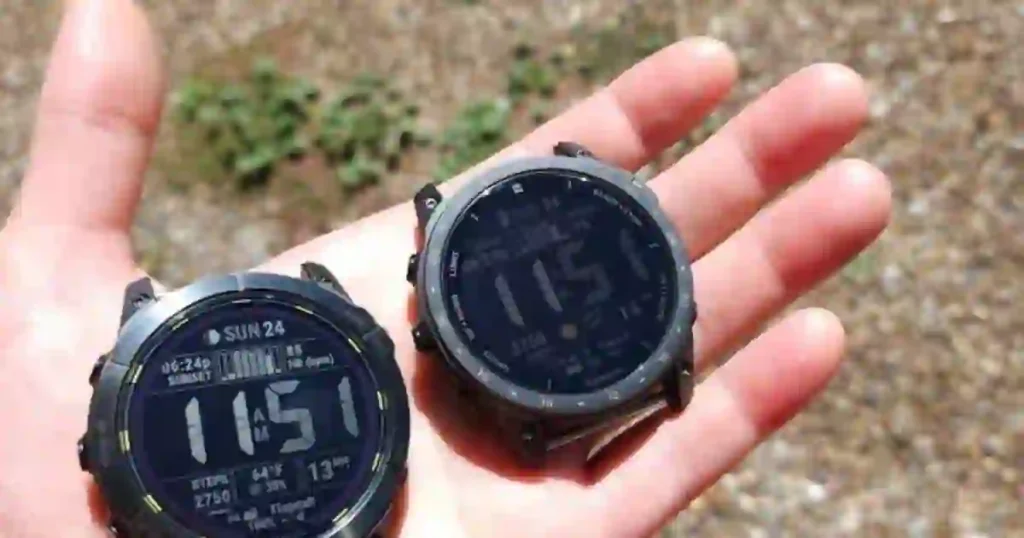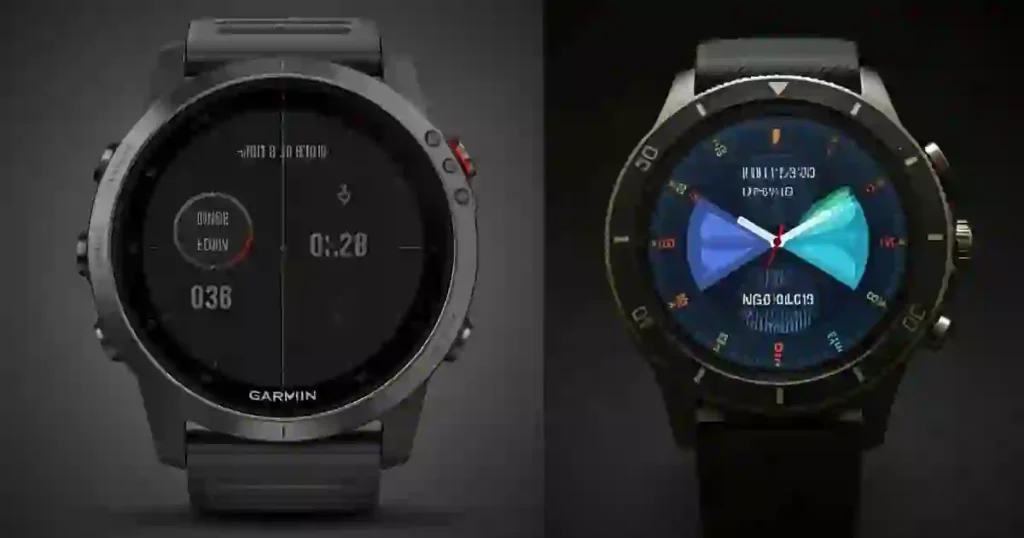Garmin has set the trend in innovations related to smartwatch technology, opening a line of various devices for different styles of living. Such a display technology choice-laden appeal lies at the heart: Memory in Pixel or AMOLED.
For years, MIP displays have been the staple of Garmin, touting energy efficiency and outdoor visibility, while more recently, the AMOLED technology focuses on vibrant visuals and lush detail. These display types are different in their benefits and trade-offs.
Below, we go over how these two display technologies work, their crucial strengths, and which may be best for what type of user.
AMOLED vs MIP Display – Quick Comparison
| Feature | AMOLED Display | MIP Display |
|---|---|---|
| Brightness & Clarity | Bright, vibrant colors with sharp details. | Good visibility, especially in bright sunlight. |
| Color Quality | Rich, high-contrast colors with deep blacks. | Subdued colors; optimized for function over form. |
| Battery Life | Shorter due to higher energy consumption. | Longer battery life, ideal for extended use. |
| Durability | Slightly more delicate under rough conditions. | Rugged and built to withstand tough environments. |
| Use Case | Ideal for everyday use, casual fitness, and lifestyle wear. | Perfect for endurance athletes and outdoor adventurers. |
| Aesthetics | Sleek, modern, and visually stunning. | Functional, simple, and utilitarian. |
| Price | Typically more expensive. | Generally more affordable. |
Key Takeaway:
Go for AMOLED if you’d wish to have a display that’s vivid and qualitative, but don’t mind charging a tad more often. Perfectly suitable for everybody-from the different classes of casual users to enthusiasts of technology.
Choose MIP for maximum battery life, durability, and performance in extreme outdoor conditions. Perfect for hardcore athletes and adventurers.
MIP Displays: Optimized for Endurance and Outdoor Use

How MIP Displays Work
MIP technology is designed on the principle of efficiency. Unlike traditional displays, which are in a constant refresh mode, MIP screens only use power when the pixels go into a different state-for example, updating the time or recording a new notification. Each pixel “remembers” its state, minimising power consumption and enabling extended battery life.
The various MIP displays are characterised chiefly by their reliance on the reflection of external light. Without using only a backlight to provide the source of brightness for their screen display, MIP reflects all available light to ensure better readability. This therefore makes the MIP very useful in outdoor applications where there is enough natural light.
In slightly darker areas, though, MIP screens kick in a backlight to keep things visible, a feature that requires just a little more power consumption.
Garmin ensures that devices with MIP screens boost their performance by implementing transflective technology, allowing it to reflect the ambient light of its surroundings during the day and to emit its own light when it needs to. This provides consistent readability regardless of variable light conditions.
Key Benefits of MIP Displays
Excellent battery life:
Garmin smartwatches with MIP screens are built to last with longer battery life. Take the Garmin Fenix 8 Solar, for instance: this watch boasts up to 28 days with solar charging in smartwatch mode. Devices like the Enduro 3 can even achieve unlimited battery life under certain conditions.
Unparalleled Sunlight Readability
The clarity of MIP displays in bright sunlight turns them into extremely highly sought-after merchandise among outdoor enthusiasts. That’s just the opposite of what has been true with other display screens, such as AMOLED, which weaken in direct sunlight, whereas MIP screens are readable in direct sunlight infect the brighter sun, the clearer the display.
Solar Integration
Garmin is showing how MIP displays can take endurance further with their line-up of solar-powered smartwatches, placing solar panels on the Fenix 6X Pro Solar and the Enduro 3 for extended battery life, perfect for extremely long outdoor adventures.
Durability and Simplicity
MIP displays are built to be resilient enough to survive in the harshest weather conditions. Indeed, several lines-most notably Garmin’s Instinct Series-utilize monochrome MIP displays that are scratch-resistant, robust, and ready for those very extreme conditions.
Trade-Offs of MIP Displays
While MIP displays are great outdoors, they are underwhelming in low light and indoor conditions. The backlight works but just cannot keep up with the AMOLED screen’s pixel density and vibrancy.
If this matter about aesthetic appeal to customers, then this screen type would be somewhat lacklustre.
AMOLED Displays: Visual Brilliance and Modern Appeal

How AMOLED Displays Work
An AMOLED represents an uptick in display technology. Unlike MIP displays, AMOLED screens light up each of the pixels individually to show richer colours, deeper blacks, and higher contrast-all of which is visually stunning and perfect for mapping detailed maps, sharp texts, and beautiful animations.
Brought into Garmin’s product lineup in 2019 with the Venu Series, AMOLED displays really made a mainstream appearance in 2022, upon announcing the model Epix Gen 2. Since then, Garmin has expanded its footprint to include offerings such as the Forerunner 265, Forerunner 965, and Fenix 8 AMOLED.
AMOLED screens are very performing, whether indoors or in a low-light environment. Because each pixel emits its own light, these displays are not requiring backlighting, therefore providing unmatched brightness and vibrancy.
Key Benefits of AMOLED Displays
Stunning Visuals
AMOLED screens are an absolute visual treat-performance-wise, featuring credible colours, deep blacks, and wide contrast. Be it getting you through a map, reading data, or personalising the watch face, the AMOLED display pops everything into life.
Excellent Low-Light Performance
While MIP displays require a backlight to see in poorly lit environments, AMOLED screens just glow with ease of their own effort. They are perfect for use in low-light conditions or indoors; they are bright and clear without the added pressure.
Responsive and Intuitive
Another introduction of AMOLED is that this display has quicker response time; therefore, when you move through menus or interact with applications, transitions are smooth-the touchscreen just becomes more fluid to use.
Always-On Display (AOD)
Many Garmin AMOLED watches have the option to always show something on display thanks to their Always-On Display feature. For those concerned about the effect this will have on battery life, Garmin offers gesture based activation options that switches the power on display with a flick of the wrist and nets double battery efficiency compared to AOD.
Drawbacks of AMOLED Displays
While the visual superiority of the AMOLED displays, some drawbacks come along:
Battery Life: An AMOLED screen drain the battery, especially when using an Always-On Display. Garmin has optimised this with features such as adjusting brightness; however, these devices with AMOLED screens still require more frequent charging compared to their MIP sisters.
Outdoor Visibility: The screen of an AMOLED struggles under direct sunlight-though it is able to compensate for this by resorting to higher brightness settings. In turn, this decreases battery life further.
MIP vs. AMOLED: A Detailed Comparison
Both MIP and AMOLED displays offer distinct advantages, but the choice depends on your priorities.
Battery Life
MIP Displays: The ones that consume virtually the least power are MIP watches, that endurance athletes, among other outdoor adventurers, like sleeping close to. A Fenix 8 Solar will keep ticking right on for weeks even if used lavishly. So MIP is clearly superior in battery life compared to what AMOLED screens offer.
AMOLED Displays: While battery life improves, still lags MIP. The Fenix 8 AMOLED lasts up to 16 days in smartwatch mode but only 7 days in Always-On Display mode.
Outdoor Visibility
MIP Displays: Clear winner under direct sunlight. The technology to reflect ambient light means the brighter it gets, the better the display.
AMOLED Displays: While outdoor readability has been optimised by Garmin, AMOLED screens still have a disadvantage in bright light conditions. But AMOLED screens performs great in indoors.
Visual Appearance
AMOLED Displays: Perfect gadget for the people who love aesthetic appeal, detailed maps, and vibrant displays.
MIP Displays: These rely more on function rather than fashion, having decent yet efficient displays suitable for outdoor conditions.
Garmin Devices: MIP and AMOLED Lineup
Garmin Watches with MIP Displays
- Garmin Instinct Series: Rugged and durable, perfect for outdoor enthusiasts.
- Garmin Enduro 3: Built for ultra-endurance athletes, offering unlimited battery life with solar power.
- Garmin Fenix Solar Editions: A favorite among outdoor adventurers for their unmatched battery life.
Garmin Watches with AMOLED Displays
- Garmin Epix Gen 2: Combines AMOLED brilliance with advanced tracking features.
- Forerunner 965: Designed for runners and athletes who want stunning visuals without sacrificing performance.
- Garmin Venu Series: Stylish and vibrant, catering to users who value both aesthetics and functionality.
The Future: Micro LED Technology
Looking ahead the newer Micro LED displays could redefine smartwatch screens and wearable technology. This next-generation screen technology promises the best of both worlds: the power efficiency of MIP and the vivid visuals of AMOLED.
Companies like Samsung and Apple are heavily investing in Micro LED development, which could bring brighter, more energy-efficient displays that excel solve the problem and in all lighting conditions.
Is AMOLED Garmin Worth It?
Whether or not an AMOLED Garmin smartwatch is worth purchasing depends on various factors, including personal preferences, needs, and priorities. The most important considerations to help you decide include the following:
Why AMOLED Garmin Watches Are Worth It:
Superior Display Quality: The displays of AMOLED screens are much more rich in colour, deeper in black, and sharp in contrast, making reading in variable lighting conditions easier, sometimes even in direct sunlight.
Modern Aesthetic: The high-resolution display offers sleekness to the watch face, making it an added beauty enhancer, a trait that most users are settling for, aside from the functionality it provides.
Advanced Capabilities: While many of these wearables come with advanced capabilities, several AMOLED models-for instance, the Forerunner 965 and Epix 2-feature advanced mapping in detail, multi-band GPS, and much more elevated fitness tracking.
Customizable: Versatile for both fitness enthusiasts and casual consumers who wear a smartwatch because of everyday use and notifications.
Possible Drawbacks:
Potential Drawbacks:
Battery Life: While Garmin is working to optimize battery consumption, the AMOLED displays use more power than their MIP (Memory-in-Pixel) brothers. That’s a trade-off if extended battery life is critical, for example, ultramarathons or long hikes.
Durability Concerns: AMOLED screens can be more prone to damage compared to MIP displays, though Garmin’s watches are generally rugged and well-built.
Price: Generally, the AMOLEDs are more expensive compared to the MIP units. If you do not consider a high-value display, you might get more value from a non-AMOLED Garmin.
Who Should Get an AMOLED Garmin?
Causal and fitness enthusiasts of smartwatches by nature would find the AMOLED display a visually sexier upgrade for everyday activities, workouts, and upkeep of lifestyles.
For the tech enthusiasts and design lovers, if you are one of those who believe in the best technology combined with impressive aesthetics, an AMOLED Garmin has much more to offer.
Middle-to-Long Distance Runners: If your activities don’t require a week-long battery life, the shorter battery life of AMOLED will not be a big issue.
If display quality and modern features are among the highest in your list of priorities, then an AMOLED Garmin is worth paying for.
But ultra-endurance athletes, or people who would trade pretty screens for battery life, Garmin’s MIP models-like the Fenix or Instinct series-might be more in their target range.
Pros and Cons of AMOLED and MIP Screens
We can then say that in front of the comparison of AMOLED and MIP screens, personal preference and needs come into account. Now, here is a short overview of pros and cons:
AMOLED Displays
Pros:
- Vibrant colors and deep blacks
- High contrast ratio provides brighter whites and deeper blacks.
- Excellent performance in low light
Cons:
- High power consumption that reduces battery life.
- Burn-in risk with static images
- Higher cost of production
MIP Screens
Pros:
- Highly power-efficient, ideal for always-on displays
- Excellent visibility in direct sunlight
- More battery life
Cons:
- Colors are not as vivid, compared to AMOLED
- Poor brightness in low light
Fewer design options due to the nature of the technology AMOLED features better color representation and low light performance, but at a higher power consumption.
MIP screens do well in terms of power efficiency and sunlight readability at the cost of some vibrancy and low light performance. Which one to choose depends on what one wants more: battery life and outdoors visibility or visual experience.
MIPS Screen vs OLED
When comparing the screens of MIPS with OLED, there is quite a difference in technology, performance, and use cases. Here’s an in-depth comparison:
Overview of Technology
MIPS: Memory-In-Pixel
- Each pixel has its memory to maintain the state and thus reduce refresh rate.
- Typically utilized in devices that require low power consumption and high visibility in bright conditions, including rugged smartwatches and fitness trackers.
- Works well with transflective backlighting for excellent outdoor readability.
Organic Light-Emitting Diode (OLED)
- Pixels emit their own light, offering vibrant colors and deep blacks.
- Does not require a backlight, which can make the display thinner and more power-efficient in some cases.
- Used everywhere from smartphones to high-end smartwatches and TVs that demand high contrast and richness of color.
Advantages
MIPS:
- Battery Efficiency: Great for always-on displays, less power is used to persist images.
- Visibility Outdoors: It allows for very excellent readability under direct sunlight by its transflective properties.
- Durability: Usually found in devices made for harsh conditions.
OLED:
- Image Quality: Excellent color reproduction, contrast ratios infinite, and deep black.
- Flexibility: This can be used on curved or foldable displays.
- Viewing Angles: Excellent, with minimal colour shifting.
Disadvantages
MIPS:
- Lower Contrast: It cannot go toe-to-toe against an OLED screen for their fantastic colors or deep blacks.
- Limited Applications: Currently applied in niche devices like rugged smartwatches and low-power displays.
OLED:
- Power Consumption: Higher power consumption is needed for bright or always-on displays, such as white-heavy UIs.
- Durability: Prone to burn-in and degradation over a period of time, which is enhanced with static content.
- Outdoor Visibility Struggles in direct sunlight compared to both MIPS and transflective LCDs.
Use Cases
For such a class of rugged smartwatches, outdoor fitness trackers, and other devices that require very long battery life and extensive outdoor exposure, MIPS would be an ideal choice.
OLED is mainly used in top-of-line smartwatches, high-end smartphones, and most devices that are in great demand for highly vibrant quality visuals.
Which One to Choose?
Choose MIPS if you prioritize :
- Long battery life.
- Excellent sunlight readability.
- Rugged and outdoors-oriented devices.
Choose OLED if You prioritize:
- Superior quality of images and vibrancy of colors.
- Indoor use or less exposure to direct sunlight.
- Premium design and aesthetics.
Each screen type has its own field in which it shines, so it really depends on your needs and environment.
FAQs About AMOLED and MIP Displays
What does AMOLED mean?
AMOLED stands for Active Matrix Organic Light Emitting Diode, a technology known for vibrant visuals and deep contrast.
What is the meaning of AMOLED display?
In AMOLED display technology used is self-lit pixels, enabling sharper images and better energy efficiency compared to traditional backlit screens.
What is a MIP screen?
A MIP screen is a display optimised for energy efficiency and outdoor visibility. It’s a hallmark of rugged, long-lasting watches like Garmin’s Instinct series.
Conclusion: Choosing Between AMOLED vs MIP Displays
Either MIP or AMOLED display will depend upon which factor is of more significance to you:
Another option, if you want battery life, outdoor visibility, and rugged simplicity is the MIP.
For visually striking views, slicker interactions, and really good performance in low light conditions, choose AMOLED.
Whichever you choose, Garmin’s lineup promises that you will get a quality device to suit your needs. Whether scaling mountains or working indoors, there’s a Garmin watch out there perfect for you.
Also See: –


